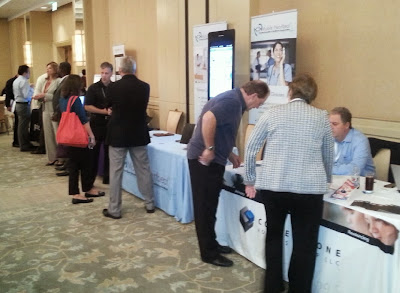 |
| Guest Poster Jean Olsen, RN BSN, Program Manager 5.66 Upgrade Project |
Centura Health is a healthcare organization located in
Colorado and Western Kansas. We
currently have 16 hospital facilities, more than 200 physician based clinics,
home health, and seven long term care facilities.
In 2006 our journey to MEDITECH as the EHR began, with an emphasis to
standardize all components of documentation and ancillaries throughout the
system. We have ONE patient database and
ONE MIS, therefore, when we do an upgrade, we have to do so with all facilities
at the same time. CPOE and Physician
Documentation have currently allowed three Centura facilities to reach HIMSS
Stage 7.
As the Project Manager for this and many of the previous
upgrade projects I wanted to make this be more of a Centura-wide project and
not keep it at an IT base. Therefore,
the eight project status meetings were held with nearly 135 people invited to
attend. These included our IT Analysts,
IT Technical and Infrastructure groups, IT Help Desk personnel, Physician
Trainers, IT Clinical Trainers, Physicians, CMOs and CIs from the various
facilities and our upgrade and account executives from MEDITECH.
Our project began in May 2013 and concluded with our go LIVE
on 10/27/13. We included the following
functionality with our go LIVE: Multi-Disciplinary Discharge Process; IMO for
Problem List and Clinical Impressions; Family Health History; Mammography
Desktop as well as a multitude of additional enhancements throughout all the
applications. By including many of the
above listed personnel, we were able to include them in the design, testing,
training, and go LIVE support process.
This proved to be very beneficial as we realized, after just the first
few status meetings, the impact this inclusion made.
Go LIVE support included: IT Phone Triage and Command Center,
Physician support Command Center, Ambulatory (LSS) support/training Command
Center. Traditionally, we had only the
IT Phone Triage and Command Center, but we found that including a special group
to provide “answers and on demand training” separate from these IT groups was
very beneficial.
I met with two of our participants and the Upgrade
Coordinator from MEDITECH and conducted a brief interview regarding details of
the experience:
Interviewer:
Jean Olsen, RN BSN, Program Manager 5.66
Upgrade Project
Interviewees:
Jen Alexander, RN BSN Clinical Informaticist and Lead
Coordinator of the Multi-Disciplinary Discharge process
Dr. Patrick Sankovitz, Director Physician Informatics
Sharon Soos, IT Analyst for the MPM (LSS) Ambulatory
Component of MEDITECH.
Jean Olsen: What is the most beneficial enhancement made
available in the C/S 5.66 upgrade? And how has this enhanced practice for your
care providers?
Jen Alexander: The most beneficial enhancement for the
clinical staff is the multi-disciplinary discharge routine. This process
encourages collaboration as well as the use of technology. The fact that
the entire discharge process can be done via the desktop is very accommodating.
The patient packet is very patient friendly, the medications are formatted in a
way that is very clear to the patient.
Dr Sankovitz: I agree with Jen. MDDP has raised the
providers’ awareness of the team aspects of patient management. It has
provided them a “one-stop shopping” opportunity for discharge-related
activities.
Sharon Soos: Ambulatory – When looked at from the patient’s
point of view, the Patient Visit Summary rises to the top. The patient
leaves the office with a document about the encounter, including medications,
medical problems, future appointments, health goals, educational material and
several more items of information for the patient.
We included MEDITECH on all our 5.66 Upgrade Project Status
Calls. What benefit did this provide?
Jen Alexander: Not sure there was a direct benefit for me. I
do think it was helpful for the analyst.
Dr Sankovitz: This was helpful because there was a sense of
efficiency … access to immediate confirmation on issues, plus a confidence that
right hands knew what left hands were doing.
Sharon Soos: As an analyst, this was extremely beneficial
since the review of an issue often led to other questions and a better
understanding of the functionality including any limitations to the functionality.
The upgrade implementation began in May 2013 with the
development of the 5.66 PP1 TEST ring, and concluded on October 27th with our go
LIVE. We also took a Priority Pack update PP 2-4 and a PP 5 in
September. What are your thoughts about this timeline?
Dr Sankovitz: My part in the timeline was too short. There
was in reality a very narrow window between access to the “final” product in
TEST and when we had to train end-users. We were still discovering
functionality issues as we went live. Would have preferred two more
weeks, minimum, when we could have been more robust in our testing and,
therefore, could have brought more consistent and accurate teaching to the
end-users.
Sharon Soos: We were ok with the time following the original
load and PP 2-4. Perhaps having more time for PP 5 for testing would have
eased the feeling of having to scramble to be ready.













